
This is an interview with sculptor Tracy Powell, which took place at his studio in Anacortes, WA on March 5, 1996. Tracy has been a NWSSA member since 1992 and an active carver since 1980. He recently was elected to the Association’s board and will be a carving instructor at the summer symposium. He contributes in many ways as a kind, joyous and supportive person, and by example, as an active creator. His stone sculpture is currently being shown at Gallery Mack, Seattle, WA.

Stephen Sandry: We start by looking at one of Tracy’s works, a standing figure with her face buried in hands. The figure is approximately 42″ tall in marble, entitled “Sorrow”.)
Tracy Powell: This image came to me the day that Yitzhak Rabin got killed. The television news showed a woman sobbing into her hands. That’s the human condition! I walked into the shop and saw this block of marble which had been sitting here for a year, and the idea for the piece popped right out. On the carving bench, the figure read as full size. But when I put it down on the floor, I saw “this is a girl”. The image was transformed, and her whole story was different. So, my thoughts were to combine that figure with a life-size mother-type figure, perhaps with her hand reaching out to the child. (Tracy has been considering this work for an open competition for an art purchase by Harborview Hospital, Seattle W A. The general theme for the commission is healing.)
SS: Certainly sorrow and grief fit well with the healing theme, being precursors to deep healing.
TP: Maybe just by herself, she could be useful as a healing instrument. I think that’s a really important function of art: to touch that vulnerable part of somebody else without hurting them. Saying it’s okay to do this (cry, feel sorrow); not to force anybody to cry, but just to say it’s okay.
Technically its not very good at all. The proportions are bad, and I should have tried harder for the drapery. But, it works. Here’s another piece, “Cloud Swimmer”, in marble. This boulder was in a stream in Eastern Washington. In the creek it glowed, and sparkled.

SS: Where did you find the idea for “Cloud Swimmer”?
TP: From the rock, but it took a while to figure out. At first I tried too hard. There’s no distinguishing shape to the stone, and I was trying too hard to find some shape. Until I realized, it’s just a cloud, with little pieces of the swimmer peeking out. That’s all you have to do, find a face here, a knee there, and let the rest go.
SS: This area, the Skagit Valley, seems to be an inspiring place to be, a place for artists to get inspiration.
TP: There are powerful primal forces that come together here. The Skagit River and Puget Sound come together, and Mt. Erie is the remnant of an old volcano. It’s the basalt plug–all that’s left of the old volcano after it eroded away. You’ve got the mountains, the river, and the forest to remind you of the primal elements.
SS: I’d like to talk about your history, particularly about your path as an artist. Where are you on that path?
TP: I’m in kindergarten!
SS: What do you mean? You’ve been seriously carving in wood and stone for about fifteen years. You’ve done lots of work. The work shows competence and confidence. You are producing regularly. How are you still in kindergarten? You’ve obviously learned enough to make a statement.
TP: No, not really. I feel that I’m getting closer, though. I think I’m still working on craft. The” statements” come later. I’m learning the “voice” now. I’m still learning the technical aspects: how do you hold the tool, how hard do you strike with the hammer, those kinds of things. And the material–what can you do to it without hurting it. How do you get it to do what you want it to do.

And it’s understanding the forms. I’ve been playing with this one now for the last couple years. It’s a leaf, and it’s a flame, and it’s a wing. It comes up to a point, and I see this everywhere. I’m constantly playing with that, redrawing the same form, hoping to understand it and learn what it’s talking about. Other forms are the figures. I’m learning more about that and enjoying that a lot more.
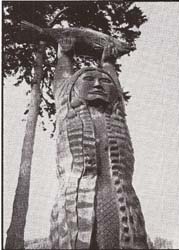
SS: Perhaps you stay vital if you are a learner, a student of anything you are attempting.
TP: There are things I think an artist should say. There is some sort of purpose to our work. But to express these ideas can be difficult. In writing a great poem, you’ve got to know your language so well that the words just spill out of your mouth. Robert Bums, or Bob Dylan … although we may not have seen it, there was probably a great learning process for them to go through.
The skills have to become second-nature. It has to do with elegance. This I learned from a math teacher who sought elegant solutions to complex math problems. When you tear away all the bullshit, there is an elegance in the universe which we are striving to glimpse. For him the way to do it was “farout” math. He was right. Whenever you glimpse something like that, it’s a big AH HA! 1 think you learn and then you unlearn.
SS: How long have you been actively carving?
TP: Since we moved to the Skagit Valley in 1980. Prior to that I had been working for the city of Everett Parks Dept. and playing a bit with art. That time was mostly devoted to work and family. I was hanging on to a little (artistic) thread that I knew was in the background and that I would get back to later. Prior to family life, I was bumming around, living on the streets–being inspired by Jack Kerouak! I painted pictures on people’ s walls, ceilings, sheets, blankets.
SS: What led you to carving?
TP: I had enjoyed whittling as a Boy Scout. Later I was introduced to Indian art. I found the Northwest Indian art to be very exciting: masks, totem poles, and cultural paraphernalia. I started playing with copying some of those forms, as a hobby. My job with the parks led me into management, giving orders to thirty people, which I hated. It drove me berserk. That’s why we moved to the Skagit valley. My head was ready to separate from the rest of me. My artist spirit was pretty well smothered. It felt like moving here was the only place I could survive. It seemed like a life-or-death matter. I worked with my brothers here at boat building and odd jobs. Eventually, I started my woodcarving business, doing signs for boats and businesses. 1 worked at another parks job, but kept the carving going.
I carved a large cedar resurrection figure (“The Burning Christ”) for a church in Anacortes (4’xlO’). I worked for the Samish tribe and spent a year carving the “The Maiden of Deception Pass (24’h x 5′ dia.) sited at Deception Pass. I then did cultural preservation work for the tribe, cataloguing artifacts. I wrote a book on woodcarving in Co-Salish styIe (Handbook For Carvers: The Samish School of Co-Salish Woodcarving), this was about the local Native style (Vancouver Island to Oregon) which hadn’t been written about. And I taught classes in this carving style. Working with the tribe, I saw how connected they were to the past cultural heritage. Things were still alive that had been going on for countless generations connected to this area. Going through that process as a voyeur made me want to find out where we came from, to get connected to that past. This has taken me to studying Welsh, Irish, Scottish history, and back into Celtic history. I’m looking for a Druid (the shaman class of Celtic and Iberian society) to talk to. There’s written material dating to 500a.d. telling stories that were old then. These feel important to me, as if I can almost understand them. Some of the symbols I’m interested in come from this period.
SS: One of the things I’m interested in are the ideas and work that come through us unselfconsciousIy: ideas that flow from the universe beyond our limited selves. It appears like your work flows for you.
TP: I’m striving for that. As I said before, one thing I’ve been struggling with lately is abstract versus figurative work. All the abstract things that I do are basically two dimensional, they have two separate sides. In figure work it’s three dimensional, every angle is a different picture of it. When working with a figure, it just comes naturally to work in 360 degrees and it’s truly three dimensional. Bul. I haven’t found that facility with abstract forms. I call them two and one half dimensional. more of a picture than a sculpture. I’m an admirer of Rodin. And one of his rules was that the sculpture had to be perfect all the way around, including from top and bottom views. That was a complete sculpture if it had that trueness. That’s tough!
The other thing is a concept. Bill Holm and Bill Reid discussed in their book on Indian art, an idea called “emergent line”. It is not a line that you draw, but a line that happens when you carry one plane in one direction, and you bring another plane up to it. Wherever they meet, that line emerges. Those kinds of lines have a certain grace to them. Those lines result from true three dimensional activity. You don’t draw them in; they happen. That’s a wonderful thing. They come out the cleanest and with grace. I think that’s where I’m trying to go. Because you didn’t force these lines to happen, yon allowed them, they’ve really got a presence. Maybe that’s the “elegance”, those things that happen “behind your back”.

SS: What are your favorite stones to work with?
TP: The oolitic limestone. I enjoy all the stones, but limestone is by far the most fun.
SS: What qualities do you like about it?
TP: It doesn’t get bright. It’s very uniform in color. It makes nice shadow. In the stones with more color and pattern, they fight with the sculptural form. The other thing is that I do it all with hand tools. With a good point you can move this limestone fast. With the harder stone you have to hold the image in mind for so long. It takes much more time to get to where the figure is. It can turn around on you before you get there!
SS.: What is your source of inspiration?
TP: Life, The Force. Trying to interpret or describe that. One way to say it is that it’s all religious art–it’s Life. I want to describe it and tell how beautiful it is. There’s a great joy in doing it. It’s sensual as well as intellectual. That’s why the hand carving in soft stone is so much fun. You can get intimate with the material and the image.
SS: With the flame/leaf/wing image, do you know why it is important to you?
TP: No, I don’t. It just seems to be important. There are many natural objects that have that form to them. There are man-made symbols, like the yin-yang and the infinity symbol. It’s primal. If I make enough variations on that, I might stumble upon an answer. There’s a secret in there.
SS: Is it important to you to have your work shown, seen by others?
TP: It wouldn’t have much function, if it was just for me. It’s a lot of fun to do, but I don’t particularly get off on looking at them when they’re done. If someone else responds to it, then its complete.
SS: Perhaps that’s the whole “conversation”.
TP: If it doesn’t go beyond you, what’s the point? That’s where fine art is different than spoken or written language. It’s not very precise. It’s more solid and tangible than other communication, but more up to individual interpretation. You’re not saying one thing. You’re saying a lot of things. The object becomes something else in the eyes of each person that looks at it. This can also change over time as perspectives change.
SS: Do you have a story in mind while working on a piece, particularly the figurative work’?
TP: Yes. When I’m carving a figure, I imagine a whole scene that it’s in. The other figures, the scenery. the sounds and the smells. It’s got a whole little world. But, the stone figure is all I can pluck out of that scene. That’s why I may get back to painting again, to show the whole scene. That’s part of the conversation with the piece. Over the time it takes to create a piece, that inner story or background may change several times. This may cause me to change the idea I started with originally.
SS: What is your work pattern?
TP: I squeeze studio time in amongst the other things I have to do. I’m always working on half a dozen images, but I try to do only one piece at a lime, all the way through.
SS: Where are you going with your art?
TP: I want to get better. I want my pieces to say what they need to say. Elegance, that’s what I’m after: something like clearing the pool table with one shot. Start with a rock; hit it once and have a perfect sculpture emerge. That would be an elegant act!
SS: How are you involved with NWSSA?
TP: I’ve been a member since ’92 and was recently elected to a position on the Board of Directors. I’ve received so much from this group: technical skill and inspiration, guidance, support and love. I want to give a little bit back, to keep the wheel spinning.

SS: What is your vision for the group?
TP: I think it would be nice to have a permanent home, a place that was equipped for what we want it to do. It would be good to have a big studio somewhere that we could all use. The idea of a sculpture center at Sandpoint in Seattle (formerly the Naval Air Station) is a wonderful dream. I love that! It is supposed to be a dedicated art environment. Our group is on the list to be part of it, although it will take a long time before it is sorted out.
SS: Well Tracy, have you got any parting comments?
TP: Most human activity is either pointless or worse, except art. I think it’s the only thing worth doing.
SS: Many thanks, Tracy, for all your contributions.

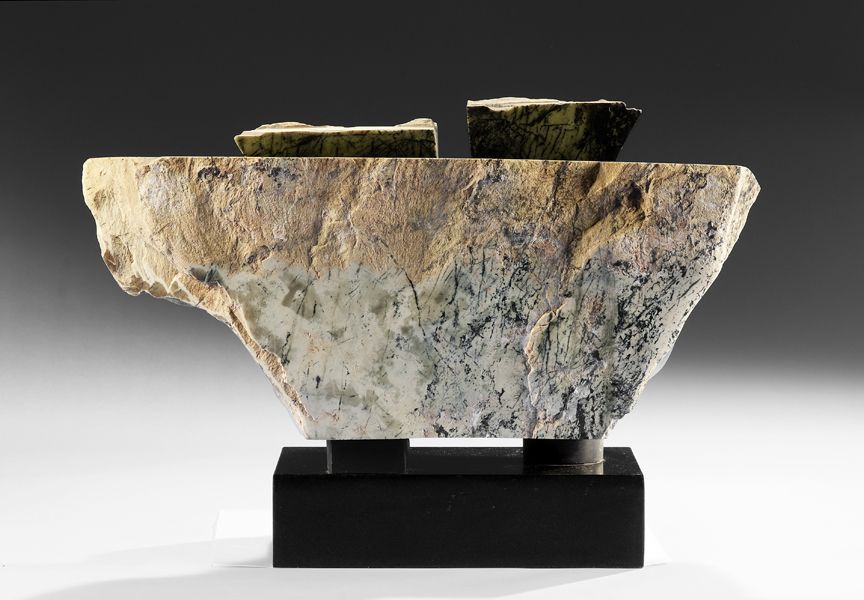


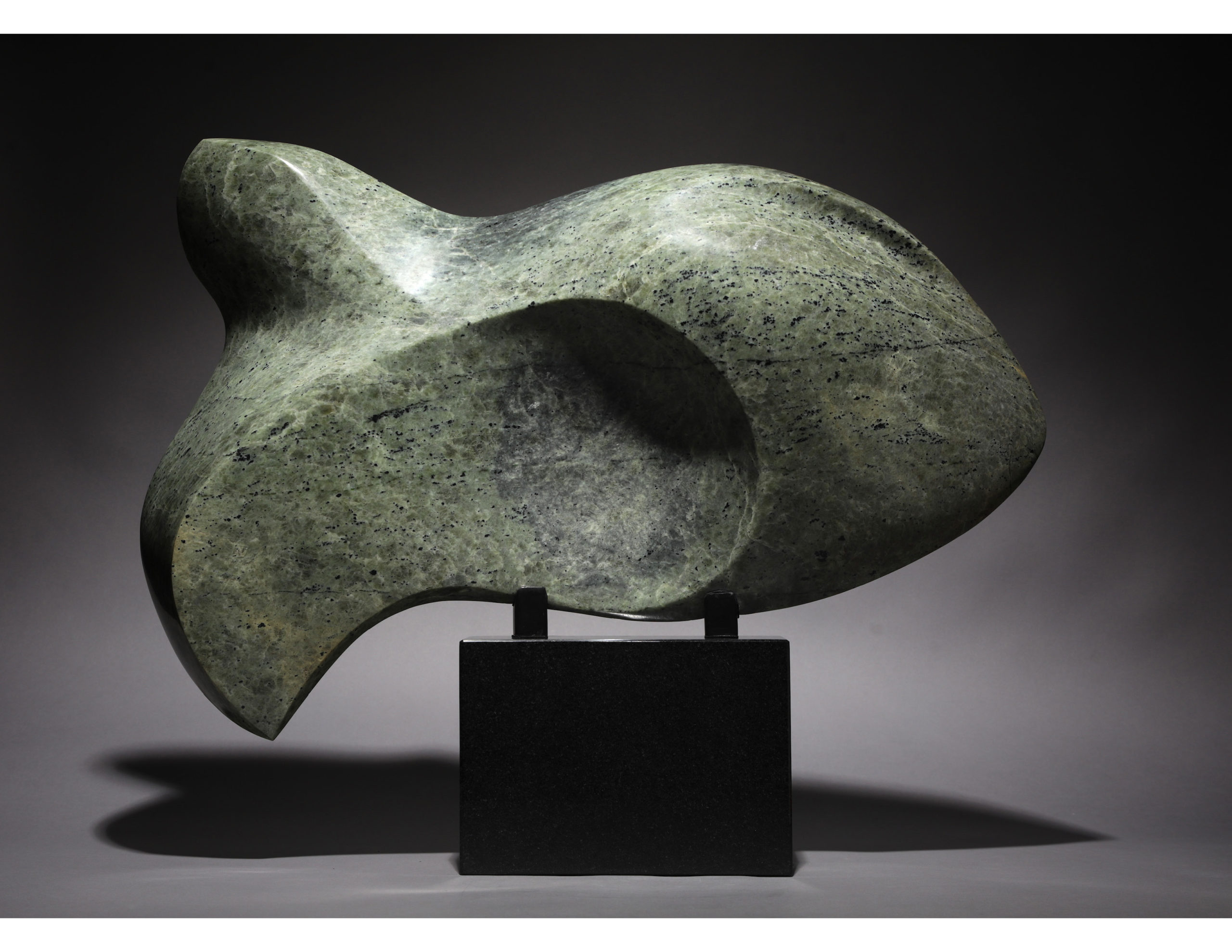
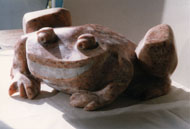
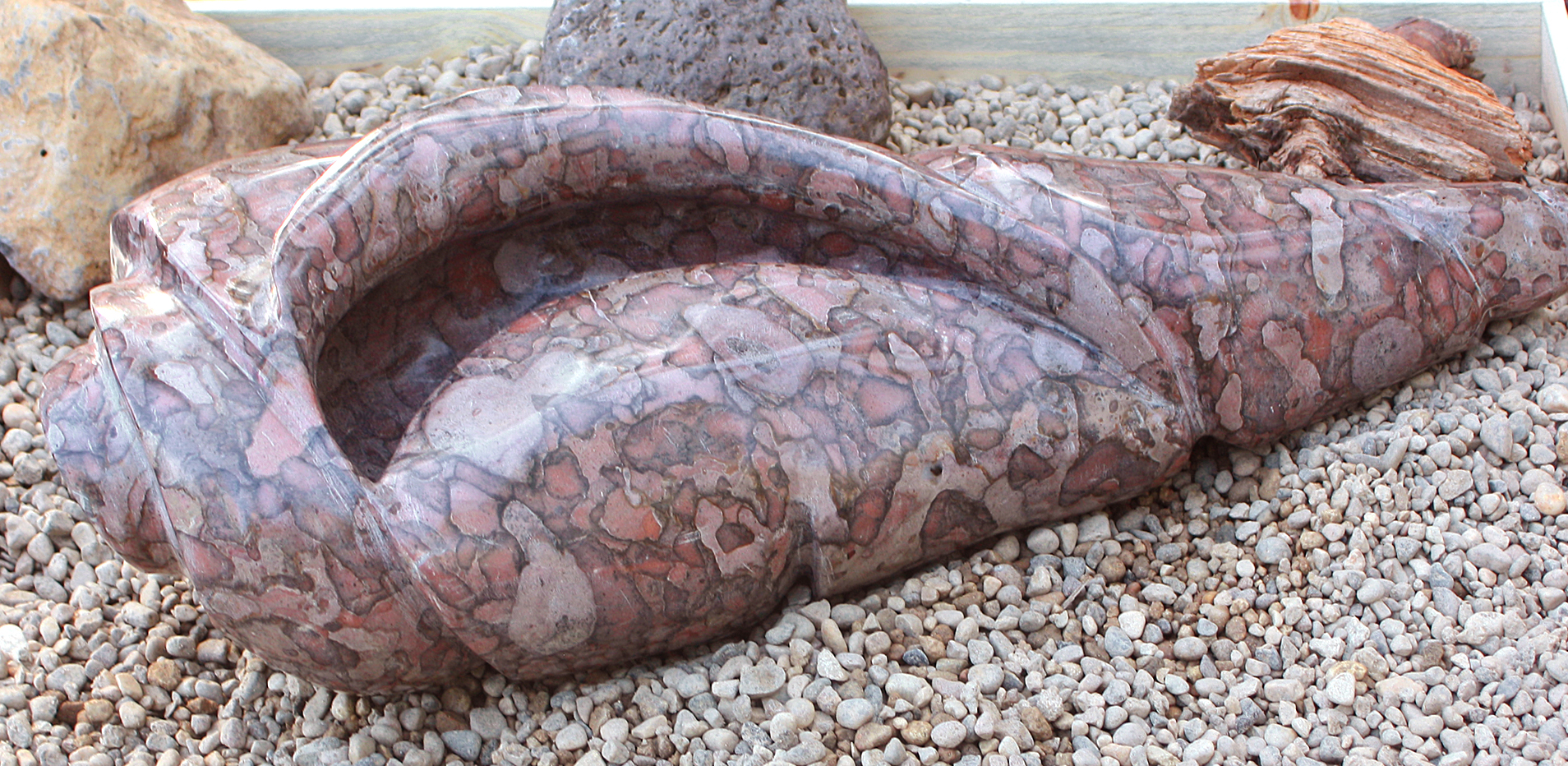

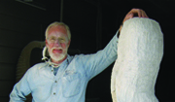


We need some kind of descriptive text here.